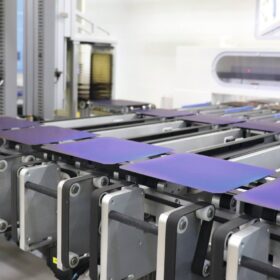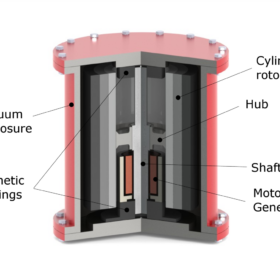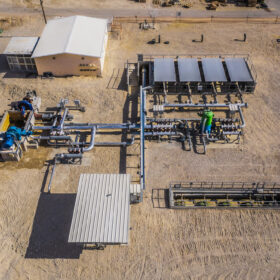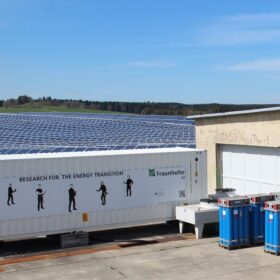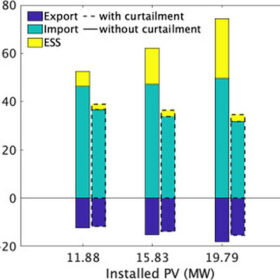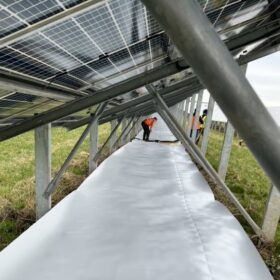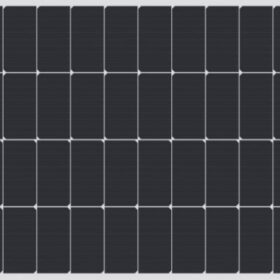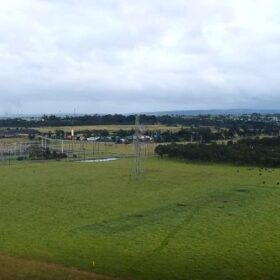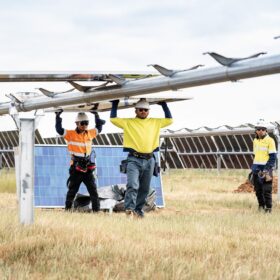Hybrid wind-solar power system for residential applications
Dutch startup Airturb has developed a 500 W hybrid wind-solar power system featuring a vertical axis wind turbine and a solar base hosting four 30 W solar panels. The system can be used for rooftop or off-grid applications.
Jolywood claims 26.7% efficiency for n-type TOPCon solar cell
The China Academy of Metrology and Science has certified Jolywood’s 26.7% efficiency rating for an n-type tunnel oxide passivated contact (TOPCon) solar cell, which the company claims is a world record. In November 2022, it announced a 26.1% efficiency rating for a similar cell.
Battery hydrogen vs. battery flywheel
Scientists in Italy have looked at how flywheel storage and reversible solid oxide cells could be integrated with lithium-ion batteries in minigrids powered by solar. They found that flywheels combined with batteries could be the cheapest option for power smoothing.
‘Least-cost’ model for compressed air energy storage
Stanford University researchers have created a model to assess how much compressed air storage capacity might be needed for the deep decarbonisation of power systems, while compensating for the variability of wind and solar-based power systems. They applied the model to California’s energy system and found that compressed air could be very competitive on a dollars-per-kilowatt-hour basis.
Investigating load scenarios for grid-forming inverters
A consortium led by the Fraunhofer Institute for Solar Energy Systems (ISE) will test grid-forming inverters at a large-scale PV facility in southern Germany. The aim of the first tests is to examine the performance of the devices under real operating conditions, stress factors, and typical stress profiles.
South Korea cuts capacity allocations from 4 GW to 2 GW in solar tenders
South Korea has cut its 2030 renewable energy target from 30.2% to just 21.6%, as it seeks to reduce support for solar and other clean energy sources, while preparing the ground for more nuclear power and liquefied natural gas. A lobby group is now challenging the plan in the Seoul Administrative Court.
Solar curtailment vs. storage
Swiss researchers have looked at whether storage could be cheaper than curtailment in medium-voltage distribution networks with significant amounts of PV capacity. They considered storage costs, operational costs, grid constraints, electricity costs, PV generation models, and loads.
Solmax unveils reflective membrane to increase power yield in bifacial PV projects
Canada-headquartered Solmax will seek to build its presence in the Australian utility scale solar sector having developed a reflective membrane which it claims can increase the energy yield of a bifacial PV project by between 5% and 20%, depending on the plant configuration.
GoodWe releases 375 W BIPV panels with 17.4% efficiency
GoodWe will initially sell its new 375 W building-integrated PV (BIPV) modules in Australia and Europe. They measure 2,319 mm × 777 mm × 4 mm and weigh 11 kg.
Indonesian utility PLN seeks equity partners for large scale PV, wind projects
Indonesian state-owned utility PLN is seeking expressions of interest for several ground-mounted, floating solar projects and wind farms. The call includes an invitation to set up solar module factories in Indonesia to meet domestic content requirements.


